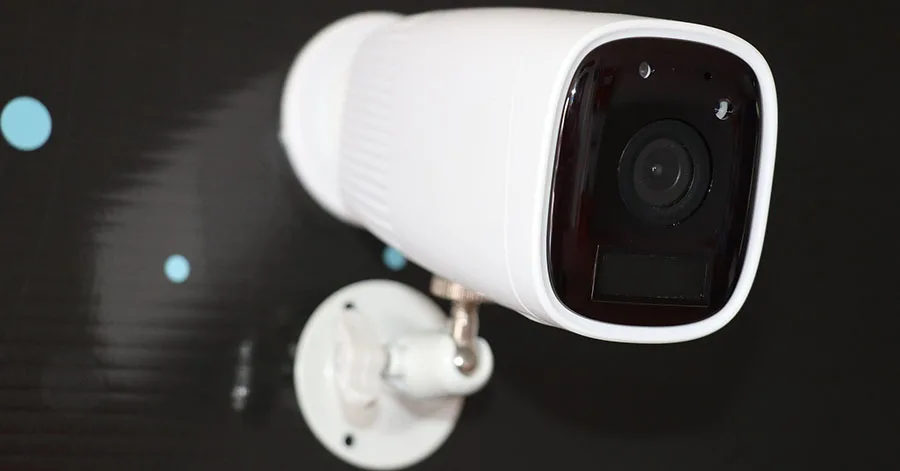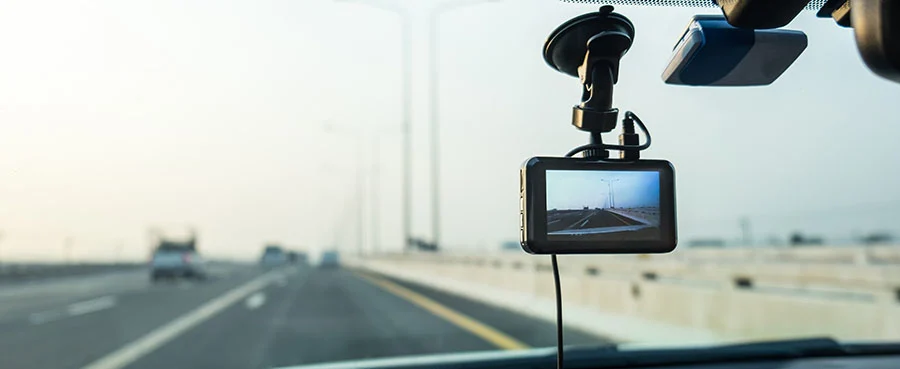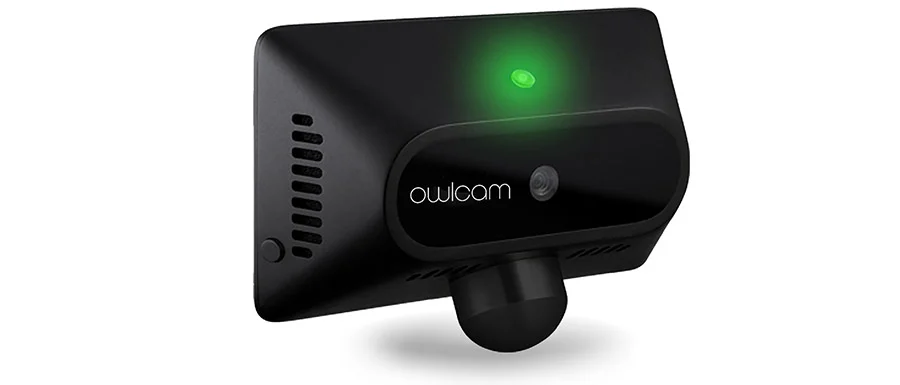If you’re concerned about keeping your car secure, then you might have wondered if you can keep an eye on it when not in use. Installing a 24/7 security camera may seem like a good option for monitoring your car, but putting a device like this in a car has some fundamental limitations.
You can’t easily install a 24/7 security system inside your vehicle because these systems need access to power and a network connection. Dashcams offer some monitoring, but only when the car is on and driving.
There are some options when it comes to 24/7 monitoring your car. Consider each option and assess them based on your needs to find the right choice for you. Some choices require some extra planning and are not as plug and play as a dashcam, and there is a big difference between a security camera and a dashcam.
Security Camera vs. DashCam

Security cameras and dashcams may seem like interchangeable terms, but the reality is each camera has a different monitoring function. You may consider using both devices together to build a robust security system.
To clear up the confusion between the two devices, let’s explore what they are:
- A Dashcam provides real-time monitoring while the vehicle is running. They work with your vehicle’s 12V electrical system and only run when the car is in the accessory or run mode. These devices typically sit on the dash of the vehicle and are continually recording video.
Products like the Garmin Dash Cam 46 (on Amazon) can provide hours of driving footage with other features like voice commands and driver alerts. These devices usually rely on onboard memory for storage. This means you have to take an SD card out or connect to a computer to view the footage. Sometimes it can’t just be done over a network.
- As we explained in our guide in indoor versus outdoor cameras, a security camera differs from a dash-cam in that it’s meant to be always recording. These cameras can be used to monitor the car when not in use and record footage if something happens to your vehicle when you are not around (like a break-in or vandalism).
Twenty-four-seven security cameras require a constant source of power to keep running. That means either a dedicated power line or battery power. Most security cameras also need access to a network to transfer their footage which you can also view on a Smart TV if you wanted (our guide).
Running a Security Camera in Your Car

One of the main limitations of running a security camera in your car is access to power and a network which could cause latency issues as we’ve suggested before. These limitations prevent the possibility of constant monitoring.
If your car is parked close to your house, or in an attached garage, it might be in range of your wifi signal. That may cover the network issues but, let’s be honest, if you’re considering a security camera like a GoPro in your car – (our guide on why not to do this) – it’s probably because it’s parked out of your wifi range.
And even if you could get some wifi in the car, if someone were to steal it, the camera would be out of range and unable to transmit data anyhow. It’s a moot point, because the real problem is going to be power.
If you have ever left your headlights on, you know that your car’s battery can quickly run down. A security camera that requires constant power would do the same. The car’s battery system relies on the car to be running to recharge the cells; without the car engine running the alternator, no camera hooked up to it would last more than a few hours.
As you can imagine, this is a difficult problem to solve. Companies have tried to produce products that aim to bridge the gap between dashcam and security cameras. A camera that could work to monitor the vehicle both while driving and when not operational, but there isn’t a device that’s designed to record 24/7 in the car.
The OwlCam

At one point, a company called OwlCam offered 24-hour monitoring in compact and portable form factor, an industry first. They did this by using your car’s OBD-II connector. This sensor allowed for more than just power to be transferred to the OwlCam.
The OwlCam also allowed for the smart AI in the camera’s software to monitor the car’s battery and shut off the recording function when the battery was depleted by 5%, which was, on average, around 24hrs. This feature is what made the camera able to monitor the car without needing it to run continuously. If not for their ingenious software design, the camera would just run until the battery was completely drained.
Unfortunately, the company that created OwlCam has been sold off and since gone dark. And with the OwlCam off the market, there is no other product on the market that aims to fill this gap between dashcams and security cameras. So if you’re in the market for something to watch your car while it is not in use, you may be wondering if there are any good options left.
Other Car Monitoring Solutions
There are still some things you might want to consider if car security is a concern. These options may require some out of the box thinking or some reevaluation of possible security options. If you are a creature of habit and park your car in the same place each day, it might be a good idea to invest in an outdoor security camera. You could point this directly at your car’s parking spot and have constant monitoring of that area.
A good option for an outside security camera would be the Nest Outdoor Cam (on Amazon). This device uses the Nest software to allow access to the camera from a smartphone. The interface is simple, and the hardware is easy to install. A dedicated outdoor security camera, whether pointed at the street as explained in our guide or used in your backyard, will run off your home’s power and be connected to your home network. This will ensure the device is continuously monitoring your car’s parking spot.
But keep in mind where your camera will be pointing. If you have public spaces or your neighbor’s homes in view, you might be causing yourself some headache down the road. You can check out our other article that discussed pointing you camera at the street for more discussion around this.
Another option to consider is the use of a car tracking device. These devices use GPS technology to track the movement of your car. While this option does not provide a video feed of your vehicle, in the event of a theft, you would be able to track your car wherever it went. You can find GPS tracking devices, like the Trak-4 GPS Tracker (on Amazon), in many different shapes and sizes.
GPS trackers provide a reliable and durable way to track your car if it gets stolen. These devices are also built to last with a battery life of several months.
Summary
Unlike setting up a security camera as a baby monitor using our guide, to replicate the function of a security camera in a car requires some high-level equipment. For one, you would need something as advanced as an iPhone to take care of recording. You would also need a power source to keep the computer and the camera running.
If they had no other options, one could use an old iPhone hooked up to a solar charger on the dash. But this DIY fix may cause more problems than it solves. These types of solutions require a fair bit of technical know-how and the ability to troubleshoot when needed. It might also mean that you will get shoddy coverage, which is a considerable disadvantage when thinking about security monitoring.
Overall you might find some limited options for constant monitoring for your vehicle. Be open to shifting what your needs are to find suitable solutions. Consider parking your car somewhere else, or picking up outdoor cameras to place in strategic locations, or simply drive a car that’s too old and beat-up to steal!
